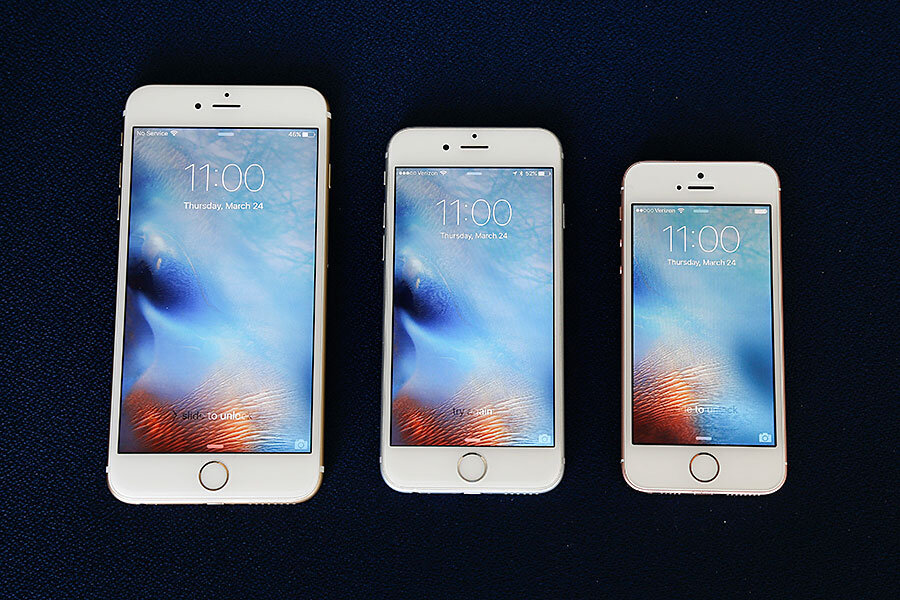Why Apple's going small with the iPhone SE
Loading...
| MK
Bigger isn’t always better, says Apple with its new iPhone SE.
Announced at the end of March, Apple’s new four-inch iPhone SE is smaller and cheaper than previous editions. The latest iPhone editions, the 6 and 6 Plus, are noticeably larger at 4.7 and 5.5 inches long respectively.
“You get the same 12-megapixel rear camera that’s in the much larger iPhone 6S, but for $250 less, at about $400. You also get the same speeds and graphics capabilities,” explains the Associated Press. “Of course, you don’t get everything. The SE isn’t going to be right for everyone, especially power users.”
Some of the shortcomings include: an older 1.2 megapixel front camera (compared to the five megapixel front camera on the iPhone 6S), no image-stabilizing feature in the rear camera or 3D Touch, and low levels of storage.
But there are a lot of impressive features added to the new small and sleek iPhone SE as well. Apple promises a battery life of 13 hours, a few hours longer than the promised life of the 6S. And while the front camera may have fewer megapixels, the SE has a front flash. “More importantly, it’s defying the design trend of bigger-is-better,” says Forbes’s Brooke Crothers. “I like Apple when it’s counterintuitive. Small has its place.” The iPhone SE is “palmable and jammable. (In addition to being more usable with one hand),” adds Crothers.
But a four-inch iPhone isn’t a novel invention for Apple. In fact, the iPhone 5s, only one generation before the latest addition, also measured four inches. But the most interesting aspect of Apple’s downsizing could be its impact on the Asian market.
China is now Apple’s second-largest market, and probably the one with the most potential. After releasing its earnings for the fourth quarter of 2015, its revenue from Chinese sales increased 99 percent from the year before – from $5.7 billion to $12.5 billion.
“For years, analysts have been concerned about Apple being unable to keep up its record-breaking iPhone sales, which have been largely dominated by the Americas and Europe,” explains the Verge’s Micah Singleton. “But with its rapidly growing middle class, Chinese carriers continued investment into LTE penetration – which is at 10 percent and growing – and Apple’s continued retail expansion in the country, China is becoming the key to sustaining the iPhone’s remarkable growth.”
But Apple’s new iPhone SE seems contradictory, because analysts partially attribute the success of the iPhone 6 and 6 Plus in China to an Asian preference for larger phones. Tech analysts suggest different reasons for the Chinese preference for a larger phone, but some conclude that larger phones make it easier to draw Chinese characters and they may also prefer larger phones for video purposes, because the smartphone is likely the only computing device owned by a Chinese customer.
“Apple fans in China had been waiting years for bigger-screen iPhones and they are upgrading at a furious rate to the new models,” Neil Mawston, executive director at the research firm Strategy Analytics, tells Reuters. Mawston says Apple was feeling the heat after Samsung won over million of Chinese smartphone users with its Galaxy Note ‘phablet’ (a crossover between a tablet and a phone). “Apple really had no choice but to come back with a bigger screen iPhone for the 5-inch category to bring those switchers back, and that’s precisely what they’ve done.”
But will the Samsung-to-Apple switchers remain with the iPhone amid the newer, smaller model? That remains to be seen.






